
The Majestic Matobo National Park: Zimbabwe's Hidden Gem
Explore the stunning landscapes, rich history, and diverse wildlife of Matobo National Park, a UNESCO World Heritage Site in Zimbabwe.
Matobo National Park is a UNESCO World Heritage Site located in the southwestern part of Zimbabwe. Known for its stunning granite hills and unique rock formations, the park offers visitors a chance to see some of the most breathtaking landscapes in Africa. Apart from its natural beauty, Matobo is also home to a rich variety of wildlife, including rhinos, leopards, and a large population of eagles. The park is steeped in history and culture. It is a sacred place for the local Ndebele people, who have lived in the region for centuries. Visitors can explore ancient rock art sites, some of which date back thousands of years. The park also houses the grave of Cecil Rhodes, the British colonialist, situated on a hill known as World's View, offering panoramic views of the surrounding landscape. For adventure seekers, Matobo National Park offers numerous outdoor activities. You can go hiking on well-marked trails, take guided game drives, or even try your hand at rock climbing. Bird watchers will be delighted by the diversity of bird species, making it a perfect destination for nature enthusiasts. Whether you are looking to explore the natural beauty, delve into history, or simply relax in a serene environment, Matobo National Park has something for everyone.
Local tips in Matobo National Park
- Visit during the dry season (May to October) for the best wildlife viewing and hiking conditions.
- Hire a local guide to get the most out of your visit and to learn about the park's history and wildlife.
- Bring binoculars for bird watching; Matobo is home to a large population of eagles and other bird species.
- Wear comfortable hiking shoes and carry plenty of water, especially if you plan on exploring the trails.
- Don't miss the chance to see the ancient rock art, some of which are thousands of years old.
The Majestic Matobo National Park: Zimbabwe's Hidden Gem
Matobo National Park is a UNESCO World Heritage Site located in the southwestern part of Zimbabwe. Known for its stunning granite hills and unique rock formations, the park offers visitors a chance to see some of the most breathtaking landscapes in Africa. Apart from its natural beauty, Matobo is also home to a rich variety of wildlife, including rhinos, leopards, and a large population of eagles. The park is steeped in history and culture. It is a sacred place for the local Ndebele people, who have lived in the region for centuries. Visitors can explore ancient rock art sites, some of which date back thousands of years. The park also houses the grave of Cecil Rhodes, the British colonialist, situated on a hill known as World's View, offering panoramic views of the surrounding landscape. For adventure seekers, Matobo National Park offers numerous outdoor activities. You can go hiking on well-marked trails, take guided game drives, or even try your hand at rock climbing. Bird watchers will be delighted by the diversity of bird species, making it a perfect destination for nature enthusiasts. Whether you are looking to explore the natural beauty, delve into history, or simply relax in a serene environment, Matobo National Park has something for everyone.
When is the best time to go to Matobo National Park?
Iconic landmarks you can’t miss
Natural History Museum of Zimbabwe
Uncover the natural wonders of Zimbabwe at the Natural History Museum, where every exhibit tells a story of the country's rich heritage and biodiversity.
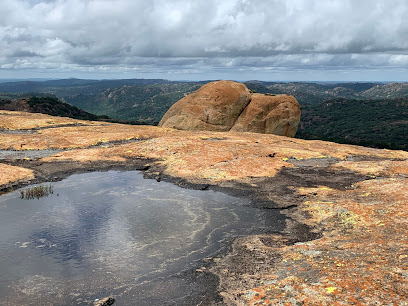
Grave of Cecil John Rhodes
Discover the historical significance and breathtaking landscapes at the Grave of Cecil John Rhodes in the Matopos Hills, a must-visit for every traveler.

Big Cave Camp
Experience the beauty and tranquility of Big Cave Camp in Matobo National Park, where nature and adventure meet luxurious comfort.
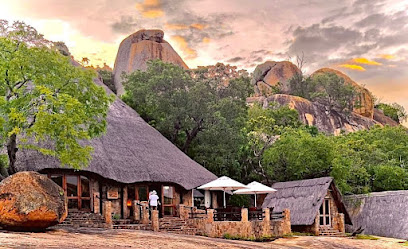
Mpopoma Park
Experience the natural beauty and cultural richness of Mpopoma Park in Bulawayo, a serene escape for nature lovers and families.

Matobo Hills Lodge
Explore Matobo Hills Lodge, where luxury meets nature in the heart of Zimbabwe's breathtaking Matobo National Park.

Matobo Hills
Discover the breathtaking beauty and rich heritage of Matobo Hills, a UNESCO World Heritage Site in Zimbabwe, perfect for nature lovers and history enthusiasts alike.

Blue Hills
Discover serenity and stunning landscapes at Blue Hills, a must-visit tourist attraction in Bulawayo, Zimbabwe, known for its breathtaking views and cultural richness.

Njelele Shrine
Discover Njelele Shrine, a sacred archaeological site in Matopos, Zimbabwe, rich in culture, history, and breathtaking natural beauty.

Tshabalala Game Sanctuary
Explore Tshabalala Game Sanctuary in Bulawayo, a tranquil park rich in wildlife and natural beauty, perfect for nature lovers and families alike.

Leopard Rock Bulawayo
Discover the stunning natural beauty and diverse wildlife of Leopard Rock, the premier hiking destination in Bulawayo, Zimbabwe.

Silunguzi Matopos Cultural Village
Immerse yourself in the vibrant traditions of the Matabele people at the Silunguzi Matopos Cultural Village in Bulawayo, Zimbabwe.

Matopo Tour Trails
Explore the breathtaking Matopo Tour Trails, a UNESCO World Heritage site in Zimbabwe, rich in wildlife, history, and stunning landscapes.

Magical Forest
Discover the allure of Magical Forest in Matopos Game Park, a serene retreat filled with breathtaking nature, rich wildlife, and historical wonders.

Unmissable attractions to see
Grave of Cecil John Rhodes
Explore the historic Grave of Cecil John Rhodes in the breathtaking Matopos Hills, a key site for understanding Southern Africa's colonial past.

Tshabalala Game Sanctuary
Explore Tshabalala Game Sanctuary, a wildlife haven in Bulawayo, Zimbabwe, perfect for nature lovers and adventure seekers alike.

Matobo Hills, Cecil Rhodes grave
Discover the breathtaking Matobo Hills and the historic Cecil Rhodes Grave, a UNESCO World Heritage Site in Zimbabwe offering stunning landscapes and rich history.

White Rhino Cave Paintings
Explore the ancient White Rhino Cave Paintings in Matobo, a breathtaking blend of history and stunning natural beauty.

Bambata Cave
Discover the ancient rock art and breathtaking landscapes of Bambata Cave, a hidden gem in Matobo National Park, Zimbabwe.

Efifi Picnic Site
Explore the serene beauty of Efifi Picnic Site in Matobo, Zimbabwe, a perfect spot for relaxation and nature adventures amidst stunning landscapes.

Lower Outspan Picnic Site
Discover the tranquil beauty of Lower Outspan Picnic Site in Matopos, where nature meets serenity for an unforgettable outdoor experience.

Picnic Spot
Discover tranquility at the Picnic Spot in Matobo, Zimbabwe - a perfect blend of nature and relaxation awaits you.

Sikwa Picnic Spot
Explore the serene Sikwa Picnic Spot in Matobo, a perfect getaway for nature lovers and families seeking relaxation amidst stunning landscapes.

Gali Hills
Explore the breathtaking landscapes, rich history, and diverse wildlife of Gali Hills, a must-visit tourist attraction in Matobo, Zimbabwe.

Mbanya Mountain Chain
Explore the breathtaking Mbanya Mountain Chain in Matobo, a picturesque destination rich in wildlife and ancient heritage, perfect for adventurers and nature lovers alike.

Picnic Site
Experience the tranquility of Matopos Picnic Site, a beautiful escape in the heart of nature, perfect for relaxation and exploration.

Matopo Tour Trails
Discover the breathtaking beauty and rich cultural heritage of Matopo Tour Trails in Bulawayo, Zimbabwe, a perfect adventure for nature lovers.

Mahlabathi
Experience the serene landscapes and rich biodiversity of Mahlabathi Park, a perfect getaway for relaxation and nature exploration in Matobo.

Mkondo Picnic Site
Experience tranquility and natural beauty at Mkondo Picnic Site in Matobo, a perfect escape for nature lovers and picnic enthusiasts.

Essential places to dine
Nando's Jason Moyo
Experience the vibrant taste of flame-grilled peri-peri chicken at Nando's Jason Moyo in Bulawayo – perfect for families and food enthusiasts alike.

The Smokehouse Bulawayo
Discover the taste of Zimbabwe at The Smokehouse Bulawayo - where exceptional flavors meet warm hospitality.

Steers
Discover delicious hamburgers at Steers in Bulawayo – where fast food meets flavor in a vibrant atmosphere.

Roosters Pub & Grill.
Experience the flavors of Bulawayo at Roosters Pub & Grill, where delicious chicken dishes meet vibrant social vibes.
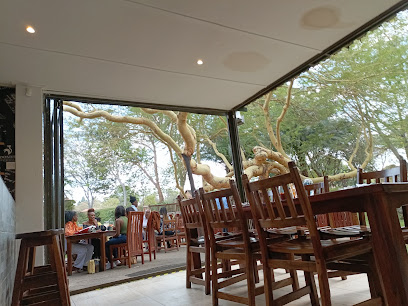
Canela Coffee Shop/Restaurant.
Discover Canela Coffee Shop/Restaurant: A cozy eatery in Bulawayo offering delightful meals and aromatic coffees amidst warm hospitality.
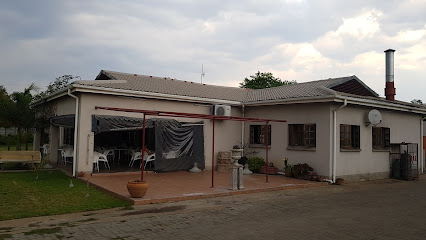
Carne Casa
Experience authentic Brazilian flavors at Carne Casa in Bulawayo – where every meal is a celebration of taste.

Simply Delicious Coffee Shop.
Discover Simply Delicious Coffee Shop in Bulawayo - where exceptional coffee meets delightful cuisine in a cozy atmosphere.

Garden Bistro
Discover culinary delights at Garden Bistro in Bulawayo - where local flavors meet vibrant ambiance.

earth cafe
Discover the flavors of Zimbabwe at Earth Cafe in Bulawayo—where fresh ingredients meet warm hospitality.

Dee & Noe Deli and Grill
Discover the vibrant flavors of Zimbabwe at Dee & Noe Deli and Grill in Bulawayo—a must-visit destination for food lovers.

New Orleans Restaurant
Discover the vibrant flavors of New Orleans at this must-visit restaurant, where Southern hospitality meets exquisite cuisine.

Deja'vu
Discover Deja'vu in Bulawayo - where local flavors meet international cuisine in a welcoming atmosphere perfect for tourists.

Ginge's Kitchen
Discover Ginge's Kitchen in Bulawayo - where local flavors meet international cuisine in a warm and inviting atmosphere.

Pizza Inn Fife Street
Savor delectable pizzas and convenient takeaway at Pizza Inn Fife Street in Bulawayo - where flavor meets convenience.

La Kreme Restaurant
Discover the culinary excellence of La Kreme Restaurant in Bulawayo - where local flavors meet international cuisine.

Markets, malls and hidden boutiques
ODDMAN T/A Morningside Supermarket
Explore the local flavors and vibrant atmosphere at ODDMAN T/A Morningside Supermarket in Bulawayo, your go-to grocery and liquor store.

Fazak Gift Centre
Explore Fazak Gift Centre in Bulawayo for unique gifts and authentic Zimbabwean crafts that capture the essence of local culture and artistry.

PastSeven Shops
Explore PastSeven Shops in Bulawayo for a rich selection of local and international groceries amidst a lively shopping atmosphere.

The Orange Elephant
Explore the artistic heart of Bulawayo at The Orange Elephant, where local crafts and vibrant culture come together in a unique shopping experience.

Highspace Supermarket
Discover the vibrant shopping experience at Highspace Supermarket, offering local delights and international products in Bulawayo.

Makoni Shopping Centre
Discover the local flavors and vibrant culture at Makoni Shopping Centre, Bulawayo's bustling grocery hub for visitors and residents alike.

Olive Grove
Explore Olive Grove in Bulawayo for exquisite handcrafted furniture and unique home accessories that embody Zimbabwe's rich cultural heritage.

giftitco.zw
Explore unique Zimbabwean crafts and gifts at Giftitco, a premier gift shop celebrating local artisanship.

Mthwakazi Shops
Explore Mthwakazi Shops: A vibrant marketplace offering authentic local crafts, delicious treats, and a taste of the region's rich culture.

The Diamonds Corner
Discover unique Zimbabwean crafts and exquisite jewelry at The Diamonds Corner, the ultimate gift shop in Bulawayo.

DIAL A GiFT ZIM
Explore DIAL A GiFT ZIM for unique gifts and personalized treasures that reflect the vibrant culture of Zimbabwe.

Love Basket Gifts and Saloon
Discover a unique selection of handmade crafts and souvenirs at Love Basket Gifts and Saloon in Bulawayo, a true representation of Zimbabwean culture.

Thintanani shopping center
Discover the vibrant Thintanani Shopping Center in Matobo, where local culture meets unique shopping experiences in a lively atmosphere.

Papillon Gifts
Explore the charm of Papillon Gifts in Bulawayo, where every handcrafted item tells a unique Zimbabwean story.

Chips ka Mongaa
Explore unique and handcrafted gifts at Chips ka Mongaa in Bulawayo, a cultural gem showcasing Zimbabwean artistry and craftsmanship.

Essential bars & hidden hideouts
Roosters Pub & Grill.
Discover the vibrant flavors of Bulawayo at Roosters Pub & Grill, where great food and a lively atmosphere await you.

Stop over Bar and Restaurant
Discover the vibrant flavors of Bulawayo at Stop Over Bar and Restaurant, where delicious grilled dishes meet a friendly atmosphere.

Tin Cup Pub And Grill
Experience the vibrant flavors and warm ambiance of Tin Cup Pub And Grill, the perfect pub for tourists in Bulawayo.

Pata Pata Beer Garden
Enjoy local brews and delightful bites at Pata Pata Beer Garden, Bulawayo's inviting spot for relaxation and socializing.

VINTAGE BAR
Experience the vibrant nightlife of Bulawayo at Vintage Bar, a cozy spot known for its eclectic atmosphere and diverse drink selections.

Mambo Beer Garden
Discover Mambo Beer Garden in Bulawayo, a vibrant beer garden offering local brews and a lively atmosphere perfect for relaxation and socializing.

Phumulani Beer Garden
Discover the vibrant atmosphere of Phumulani Beer Garden in Bulawayo, where local brews and friendly vibes create the perfect nightlife experience.

The Place Bar , Restaurant & Garden
Experience the vibrant atmosphere at The Place Bar, Restaurant & Garden in Bulawayo, where local flavors and refreshing drinks await.
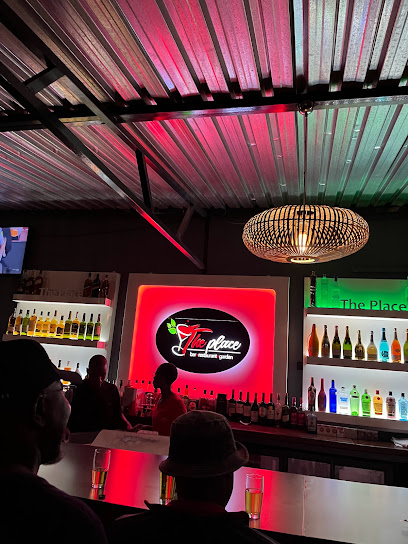
Marisha Cocktail Bar
Discover the vibrant nightlife at Marisha Cocktail Bar, where innovative cocktails and a lively atmosphere await in Bulawayo.
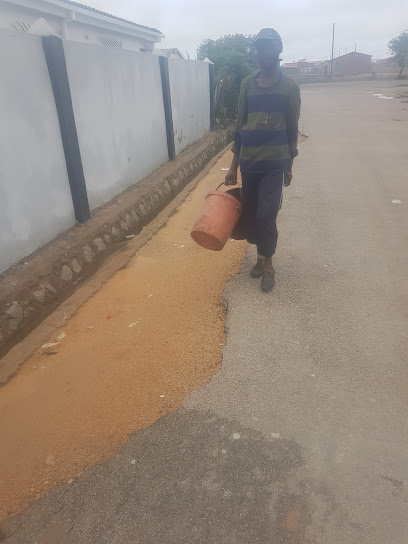
Mandlovu Beer Garden
Experience the vibrant ambiance and local flavors at Mandlovu Beer Garden in Bulawayo, a must-visit for beer lovers and socializers alike.

Banff The Deck
Discover the lively ambiance and unique cocktails at Banff The Deck, a premier bar in Bulawayo for an unforgettable night out.

KoSamuriwo Pub&Grill (Command Center)
Discover the lively atmosphere at KoSamuriwo Pub&Grill, Bulawayo's premier bar for local flavors, refreshing drinks, and vibrant nightlife.

Siphilanzima Bar
Discover the lively atmosphere and authentic Zimbabwean hospitality at Siphilanzima Bar in Bulawayo, a must-visit spot for tourists.

Mako Nights Sports Bar
Experience the vibrant energy of Mako Nights Sports Bar in Bulawayo, where sports, drinks, and good times come together.

Bambi Lounge
Discover the vibrant nightlife of Bulawayo at Bambi Lounge, a lively bar offering a great selection of drinks and an inviting atmosphere.

Local Phrases about Matobo National Park
-
- HelloMhoroi
[m-ho-roy] - GoodbyeChisarira
[chi-sa-ri-ra] - YesEhe
[e-he] - NoAya
[a-ya] - Please/You're welcomeNdatenda
[n-da-ten-da] - Thank youNdinotenda
[n-di-no-ten-da] - Excuse me/SorryNdarwadziwa
[n-da-rwa-dzi-wa] - How are you?Uri sei?
[u-ri-se-i] - Fine. And you?Ndiripo. Kupi?
[n-di-ri-po. ku-pi] - Do you speak English?Wakarurama Chiinglish here?
[wa-ka-ru-ra-ma chi-ing-lish here] - I don't understandHandisi kuziva
[han-di-si ku-zi-va]
- HelloMhoroi
-
- I'd like to see the menu, pleaseNdinoda kurova menu, musiye
[n-di-no-da ku-ro-va me-nu, mu-si-ye] - I don't eat meatHandichemere nyama
[han-di-che-me-re nya-ma] - Cheers!Shere
[she-re] - I would like to pay, pleaseNdinoda kumupa mari, musiye
[n-di-no-da ku-mu-pa ma-ri, mu-si-ye]
- I'd like to see the menu, pleaseNdinoda kurova menu, musiye
-
- Help!Taurai!
[tau-rai] - Go away!Sarai!
[sa-rai] - Call the Police!Bvunza nhunzira!
[b-vun-za n-hun-zi-ra] - Call a doctor!Bvunza daktari!
[b-vun-za dak-ta-ri] - I'm lostNdiri kupinda kwezvinhu
[n-di-ri ku-pin-da kwe-zvi-nhu] - I'm illNdiri kusakara
[n-di-ri ku-sa-ka-ra]
- Help!Taurai!
-
- I'd like to buy...Ndinoda kushandura...
[n-di-no-da ku-shan-du-ra] - I'm just lookingNdiripo ndakanganisa
[n-di-ri-po n-da-kan-ga-ni-sa] - How much is it?Zvinoitasei?
[zvi-noi-ta-sei] - That's too expensiveIzvi zvinofadza
[i-zvi zvi-no-fad-za] - Can you lower the price?Unoziva ropa here?
[u-no-zi-va ro-pa he-re]
- I'd like to buy...Ndinoda kushandura...
-
- What time is it?Zvinoita sei?
[zvi-noi-ta se-i] - It's one o'clockYakanyorwa chete
[ya-kan-yor-wa che-te] - Half past (10)Kumwechete (kumi)
[ku-mwe-che-te (ku-mi)] - MorningMangwanani
[man-gwa-na-ni] - AfternoonMasikati
[ma-si-ka-ti] - EveningMazuva ano
[ma-zu-va a-no] - YesterdayZuro
[zu-ro] - TodayNhasi
[n-ha-si] - TomorrowMangwana
[man-gwa-na] - 1Mosi
[mo-si] - 2Piri
[pi-ri] - 3Kumi na tatu
[ku-mi na ta-tu] - 4Kumi na ine
[ku-mi na i-ne] - 5Gumi
[gu-mi] - 6Gumi neshanu
[gu-mi ne-sha-nu] - 7Gumi nesere
[gu-mi ne-se-re] - 8Gumi nesere neshanu
[gu-mi ne-se-re ne-sha-nu] - 9Gumi nesere netafu
[gu-mi ne-se-re ne-ta-fu] - 10Gumi netafu
[gu-mi ne-ta-fu]
- What time is it?Zvinoita sei?
-
- Where's a/the...?Zvinoita kupi...?
[zvi-noi-ta ku-pi] - What's the address?Adress inonzi here?
[a-dress i-no-nzi he-re] - Can you show me (on the map)?Unoda kundipa (pamap)?
[u-no-da kun-di-pa (pa-map)] - When's the next (bus)?Kuzoti ndewema (bus)?
[ku-zo-ti n-de-we-ma (bus)] - A ticket (to ....)Ticket (ku ....)
[ti-cket (ku)]
- Where's a/the...?Zvinoita kupi...?
History of Matobo National Park
-
Matobo National Park is home to one of the highest concentrations of San rock art in Southern Africa. These paintings, created by the San people over thousands of years, depict scenes of hunting, rituals, and daily life. The paintings are an invaluable record of the San's rich cultural heritage and their deep connection to the land.
-
Matobo National Park holds the grave of Cecil Rhodes, the British imperialist and founder of Rhodesia, now Zimbabwe. His tomb, known as 'World's View,' offers panoramic views of the park. Rhodes chose this spot for his final resting place due to its serene and majestic landscape, which he deeply admired.
-
The Matobo Hills played a significant role in the history of the Ndebele people. King Mzilikazi, the founder of the Ndebele Kingdom, used the area as a stronghold in the 19th century. The rugged terrain provided a natural defense against enemies, and the hills became a cultural and spiritual center for the Ndebele.
-
The First Chimurenga, or the First War of Independence, took place between 1896 and 1897. The Matobo Hills served as a strategic hideout for the Ndebele and Shona fighters resisting British colonial rule. The hills' complex geography provided a formidable challenge to the colonial forces, symbolizing the resilience and resistance of the indigenous people.
-
The Matobo Hills are considered sacred by the local communities. They are believed to be the dwelling place of the spirits of ancestors and are used for various spiritual rituals. Important ceremonies, such as rainmaking and healing rituals, are conducted in the hills, underscoring the area's deep cultural and spiritual importance.
-
Matobo National Park was established in 1926, making it one of the oldest national parks in Zimbabwe. The park was created to preserve the unique landscape, wildlife, and cultural heritage of the Matobo Hills. Over the years, it has become a critical conservation area, protecting endangered species like the black and white rhinoceros.
-
In 2003, Matobo National Park was designated a UNESCO World Heritage Site. This recognition was due to its exceptional natural and cultural value, including its rich biodiversity, ancient rock art, and historical significance. The designation has helped to raise awareness and promote the preservation of this unique landscape.
Matobo National Park Essentials
-
Matobo National Park is located approximately 35 kilometers south of Bulawayo, Zimbabwe's second-largest city. The nearest airport is Joshua Mqabuko Nkomo International Airport in Bulawayo. From the airport, you can hire a taxi or rent a car to reach the park. The drive typically takes around 45 minutes. Alternatively, you can take a bus or a shuttle service from Bulawayo to Matobo National Park.
-
Within Matobo National Park, the most convenient way to explore is by private vehicle. You can rent a car in Bulawayo if you prefer to drive yourself. Guided tours are also available for those who wish to learn more about the park's history and wildlife from knowledgeable guides. While public transportation options are limited within the park, some lodges and camps offer shuttle services to and from popular attractions.
-
The official currency in Zimbabwe is the Zimbabwean Dollar (ZWL). However, US Dollars (USD) are widely accepted. Credit and debit cards are accepted at major hotels and some larger establishments, but it is advisable to carry cash, especially for smaller vendors and in rural areas. ATMs are available in Bulawayo, but they may not always be reliable, so it's wise to bring sufficient cash with you.
-
Matobo National Park is generally safe for tourists. However, standard precautions should be taken. Avoid walking alone at night and keep your belongings secure. While the park itself is safe, be cautious in Bulawayo, particularly in downtown areas and crowded markets where pickpocketing can occur. Always stay informed about the current local situation and follow any travel advisories.
-
In case of an emergency, dial 999 for police assistance or medical emergencies. The nearest medical facilities are in Bulawayo, so it is advisable to have travel insurance that covers emergency medical evacuation. For minor health issues, there are pharmacies in Bulawayo where you can purchase over-the-counter medications. Make sure to carry a basic first-aid kit while exploring the park.
-
Fashion: Do wear comfortable and modest clothing suitable for outdoor activities. Avoid wearing flashy jewelry. Religion: Do respect local customs and traditions. When visiting religious sites, dress modestly and behave respectfully. Public Transport: Do use registered and reputable transport services. Avoid using public transport alone at night. Greetings: Do greet locals with a handshake or a nod. Use formal titles and surnames when addressing someone you don't know well. Eating & Drinking: Do try local dishes and accept food offerings graciously. Don't drink tap water; stick to bottled water.
-
To experience Matobo National Park like a local, consider visiting during the early morning or late afternoon when wildlife is most active. Engage with local guides who can offer insights into the park's history and ecology. Don't miss the opportunity to see the ancient rock paintings and explore the many caves in the area. Visiting the grave of Cecil Rhodes on Malindidzimu Hill offers a panoramic view of the park and is a significant historical site.
Trending Landmarks in Matobo National Park
Nearby Cities to Matobo National Park
-
Things To Do in Selebi-Phikwe
-
Things To Do in Gweru
-
Things To Do in Masvingo
-
Things To Do in Palapye
-
Things To Do in Serowe
-
Things To Do in Hwange
-
Things To Do in Mahalapye
-
Things To Do in Polokwane
-
Things To Do in Chinhoyi
-
Things To Do in Harare
-
Things To Do in Victoria Falls
-
Things To Do in Livingstone
-
Things To Do in Kariba
-
Things To Do in Kasane
-
Things To Do in Mutare









